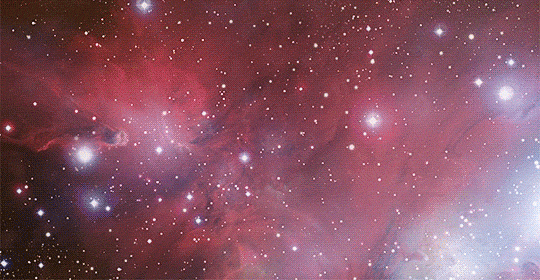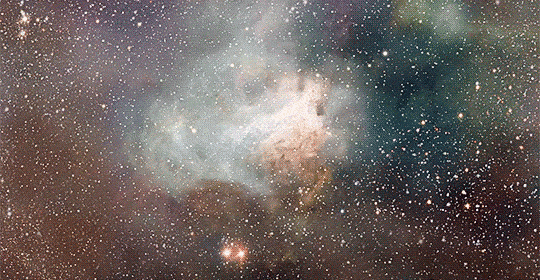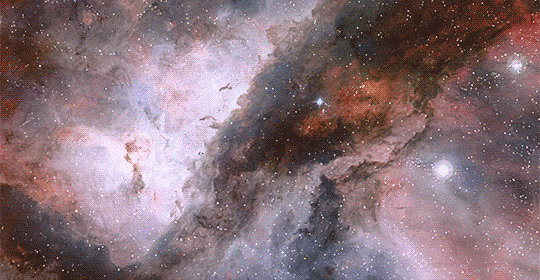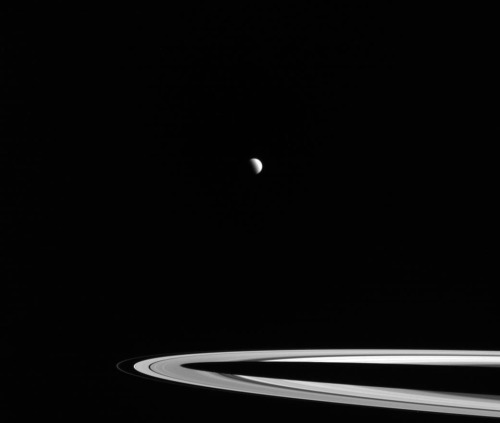Lanas-own-blog - My Personal Space.






More Posts from Lanas-own-blog and Others

NGC 5189.
Credit: NASA, ESA and The Hubble Heritage Team (STScI/AURA)




Flying Across The Universe Part 2 (From Top to Bottom: Cone Nebula, Omega Nebula, Carina Nebula, and Lupus 3)
(Part 1)
Credit: ESO.org

NGC 3324.
Credit: NASA, ESA and the Hubble Heritage Team (STScI/AURA)






Geometry and symmetry in plants, part 2
See the full thread here









An Adaptable Species: Part 1 of 4 Episode 11: The Immortals, Cosmos: A SpaceTime Odyssey

Titan with the rings of Saturn.

Merging clusters in 30 Doradus.
Credit: NASA, ESA and E Sabbi


Vela Supernova Remnant : The plane of our Milky Way Galaxy runs through this complex and beautiful skyscape. At the northwestern edge of the constellation Vela the telescopic frame is over 10 degrees wide, centered on the brightest glowing filaments of the Vela Supernova Remnant, an expanding debris cloud from the death explosion of a massive star. Light from the supernova explosion that created the Vela remnant reached Earth about 11,000 years ago. In addition to the shocked filaments of glowing gas, the cosmic catastrophe also left behind an incredibly dense, rotating stellar core, the Vela Pulsar. Some 800 light-years distant, the Vela remnant is likely embedded in a larger and older supernova remnant, the Gum Nebula via NASA
js

-
 itzbluecl0udd reblogged this · 4 months ago
itzbluecl0udd reblogged this · 4 months ago -
 itzbluecl0udd liked this · 4 months ago
itzbluecl0udd liked this · 4 months ago -
 missmagoo18 reblogged this · 9 months ago
missmagoo18 reblogged this · 9 months ago -
 poepill liked this · 1 year ago
poepill liked this · 1 year ago -
 neoretrobibliomartini-x liked this · 1 year ago
neoretrobibliomartini-x liked this · 1 year ago -
 riley1cannon reblogged this · 1 year ago
riley1cannon reblogged this · 1 year ago -
 rosie-and-charlie reblogged this · 1 year ago
rosie-and-charlie reblogged this · 1 year ago -
 7-27am liked this · 1 year ago
7-27am liked this · 1 year ago -
 alexschwrtz liked this · 1 year ago
alexschwrtz liked this · 1 year ago -
 greengirlvendetta reblogged this · 1 year ago
greengirlvendetta reblogged this · 1 year ago -
 missmagoo18 liked this · 1 year ago
missmagoo18 liked this · 1 year ago -
 coopsgirl liked this · 1 year ago
coopsgirl liked this · 1 year ago -
 pierangelis liked this · 1 year ago
pierangelis liked this · 1 year ago -
 jitterbugheartbeat reblogged this · 1 year ago
jitterbugheartbeat reblogged this · 1 year ago -
 jitterbugheartbeat liked this · 1 year ago
jitterbugheartbeat liked this · 1 year ago -
 teganrose liked this · 2 years ago
teganrose liked this · 2 years ago -
 elephantpoptarted liked this · 2 years ago
elephantpoptarted liked this · 2 years ago -
 from1837to1945 liked this · 3 years ago
from1837to1945 liked this · 3 years ago -
 eaarrthangel reblogged this · 3 years ago
eaarrthangel reblogged this · 3 years ago -
 eaarrthangel liked this · 3 years ago
eaarrthangel liked this · 3 years ago -
 princessofanimationblr reblogged this · 3 years ago
princessofanimationblr reblogged this · 3 years ago -
 morelawolf liked this · 3 years ago
morelawolf liked this · 3 years ago -
 surrealisticbaby reblogged this · 3 years ago
surrealisticbaby reblogged this · 3 years ago -
 lorlovescows reblogged this · 4 years ago
lorlovescows reblogged this · 4 years ago -
 winchesteruoy reblogged this · 4 years ago
winchesteruoy reblogged this · 4 years ago -
 winchesteruoy liked this · 4 years ago
winchesteruoy liked this · 4 years ago -
 wingsofgossamer reblogged this · 4 years ago
wingsofgossamer reblogged this · 4 years ago -
 a-little-bit-of-tradition reblogged this · 5 years ago
a-little-bit-of-tradition reblogged this · 5 years ago -
 beatleluvr22 reblogged this · 5 years ago
beatleluvr22 reblogged this · 5 years ago -
 rachelovesherlockholmes31 reblogged this · 5 years ago
rachelovesherlockholmes31 reblogged this · 5 years ago -
 disney-kawaii reblogged this · 5 years ago
disney-kawaii reblogged this · 5 years ago -
 wandering-feminist liked this · 5 years ago
wandering-feminist liked this · 5 years ago -
 yulinfantasy liked this · 5 years ago
yulinfantasy liked this · 5 years ago -
 clashingmelodies liked this · 5 years ago
clashingmelodies liked this · 5 years ago -
 upontheshelfreviews liked this · 5 years ago
upontheshelfreviews liked this · 5 years ago -
 farlongerandforever liked this · 5 years ago
farlongerandforever liked this · 5 years ago -
 thebatman36-blog liked this · 5 years ago
thebatman36-blog liked this · 5 years ago -
 litol-kitten liked this · 5 years ago
litol-kitten liked this · 5 years ago -
 castles-built-on-clouds reblogged this · 5 years ago
castles-built-on-clouds reblogged this · 5 years ago -
 adar-mine reblogged this · 5 years ago
adar-mine reblogged this · 5 years ago -
 planetcarol reblogged this · 5 years ago
planetcarol reblogged this · 5 years ago -
 definitelynotmilly liked this · 5 years ago
definitelynotmilly liked this · 5 years ago
I've had lots of blogs in the past, but this one I'm actualy excited to share with people.
68 posts